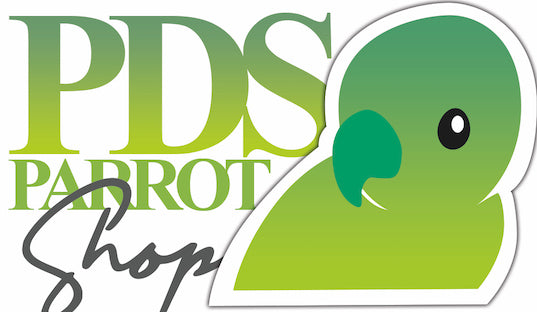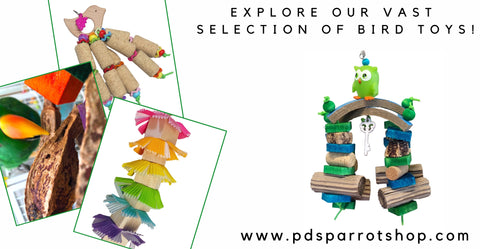
Introducing Bird Toys to a Fearful Bird: A Comprehensive Guide
Share

Understanding the Importance of Toy Introduction
Bird toys are not mere playthings for birds; they serve as essential tools for mental stimulation, exercise, and overall well-being. For a fearful bird, introducing bird toys can help alleviate stress, combat boredom, and encourage natural behaviors. However, birds with a fearful disposition require a gradual and patient approach to ensure a successful transition.
Creating a Safe Environment
Before beginning the bird toy introduction process, it's crucial to create a safe and secure environment for your bird. Ensure that their cage or aviary is appropriately sized, with no potential hazards or escape routes. Place the cage in a quiet area away from loud noises and excessive foot traffic. Providing a sense of security is the first step in helping your bird feel comfortable and open to new experiences.
Selecting the Right Toys
Choosing the right toys for your fearful bird is vital. Opt for bird toys that are appropriate for their size, species, and individual preferences. It's recommended to start with toys that are less intimidating, such as soft or lightweight toys. Natural materials like untreated wood, vine, or soft ropes can be appealing choices.
Gradual Exposure to Toys
Now that you have selected suitable toys, it's time to introduce them to your fearful bird. Patience is key during this process. Begin by placing the bird toys near the bird's cage, allowing them to observe and become familiar with the new objects without feeling threatened. Gradually move the toys closer to the cage over several days, giving your bird ample time to adjust to their presence.
Building Positive Associations
To encourage your bird's interest in toys, it's essential to associate them with positive experiences. Place treats or favorite food items near the toys to create positive associations. You can also use positive reinforcement techniques such as praise or gentle petting when your bird shows curiosity or interacts with the toys. Building trust and creating positive experiences will help your bird overcome fear and develop an affinity for toys.
Establishing a Play Routine
Consistency is key when it comes to toy introduction. Establish a regular play routine that includes dedicated toy exploration time. Set aside a specific time each day for your bird to interact with their bird toys, ensuring they have enough time and space to explore and play. Gradually increase the duration of play sessions as your bird becomes more comfortable and engaged with the toys.
Monitoring and Adjusting
As your bird continues to explore and interact with toys, closely monitor their behavior and preferences. Observe which toys they show more interest in and which ones they tend to ignore. Rotate the toys regularly to maintain their novelty and prevent boredom. Some birds may prefer certain types of toys, such as puzzle toys or foraging toys, so make adjustments based on your bird's individual preferences.
With patience, understanding, and the right approach, you can help your bird overcome their fears and develop a healthy relationship with toys. Remember to create a safe environment, select appropriate bird toys, and gradually expose your bird to them while building positive associations. By establishing a play routine and monitoring their preferences, you can ensure that your bird enjoys the benefits of a stimulating and enriching toy-filled environment.
Note: This article is intended as a general guide. If your bird's fearfulness persists or if you have concerns about their behavior, it's advisable to consult a qualified avian veterinarian or an avian behaviorist for further assistance.
More Articles on Bird Toys
For a detailed guide on picking toys that match your bird’s size, personality, and enrichment needs, explore Right Toys for Your Birds, covering material safety, design tips, and the benefits of different toy types.
Monika Sangar, MSc – Molecular Biology | Avian Nutrition Specialist | Founder: PDSnonprofit | Owner: Pds Parrot Shop
Monika Sangar is a parrot rescuer, bird food chef, and toy designer with over a decade of experience in avian care and nutrition. She is the founder of Prego Dalliance Sanctuary and the author of The Science of Avian Nutrition, a cookbook dedicated to fresh, healthy meals for parrots. Explore more bird care tips and bird toys at PDS Parrot Shop!

